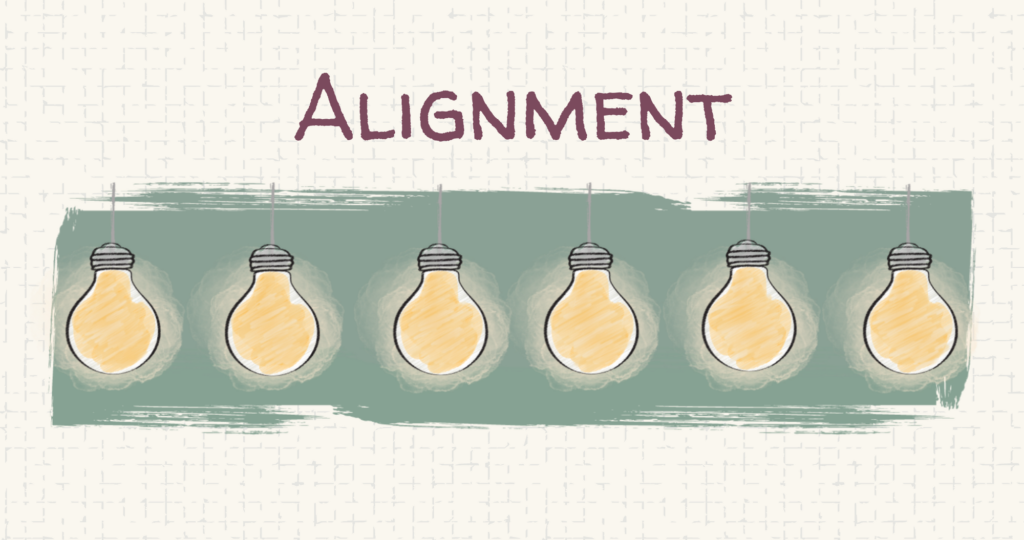How to align your team
How do you access the collective wisdom of the Head Center of Intelligence to align your team? Every team, if they want to become high-performing, needs to create a collective mind-share, a way of aligning team members that is realistic and grounded in possibility.
Aligned teams share a mental understanding and agreement about the team’s vision, goals and interdependence, as well as its operational plans and ways of working together. Alignment allows team members to know where they are going together and why what they’re doing matters.
Teams have specific alignment challenges at each of the four stages of team development: forming, storming, norming and performing.
Forming alignment (task) challenges
What are our purpose, goals, deliverables and ways of working together?
Storming alignment (task) challenges
Are we all in agreement about where we’re going and how we’re getting there?
Norming alignment (task) challenges
What agreements can we reach about how to operate more efficiently and effectively?
Performing alignment (task) challenges
Are we putting our customer first as we continuously learn and grow as individuals and as a team?
To align your team, the team needs to address each of these challenges as the team reaches each consecutive stage. Otherwise, the unresolved issues will either keep your team from progressing to the next stage, or the team may never even reach the next stage.
But what does the Enneagram have to do with team alignment? How can the Enneagram help teams become more aligned?
Use the Centers of Intelligence
Help the team understand the three Centers of Intelligence and have them explore if they, as a team, are using their collective Head Center in service of the team. Depending on the team’s stage of development – forming, storming, norming or performing – have the team discuss the alignment challenges for that stage and then reach collective agreements.
What does Enneagram type have to do with this?
People of most Enneagram types prefer and feel far more comfortable diving directly into the team’s task, and they become impatient when they are not working on their deliverables quickly. The exception to this can be Twos, Sixes, and Nines. Team members of these types might suggest getting more team alignment because they fundamentally understand that a team functions differently and is more than a collection of separate individuals. However, suggesting that the team needs to be more aligned and influencing the team to spend time doing this are not the same thing. Their voices often get overridden based on a team’s drive to move forward.
On all teams, members have to work together, at least to some degree depending on the nature of their work. Without sufficient alignment or team mindshare, overly deliverable-focused teams will produce something, but is it the best that was possible? Were all ideas and voices heard? Do all team members feel ownership for what was created and delivered? Would they want to work on this team again, if they had the choice?
In the next blog, you’ll learn about how teams can also become more attuned using the Enneagram. A team can be aligned, but if it is not also attuned, it will experience major impediments in transforming into a high-performing team. This blog series is based on Ginger’s forthcoming book, “Transform Your Team with the Enneagram.”
Ginger Lapid-Bogda PhD, author of eight Enneagram books, is a speaker, consultant, trainer, and coach. She provides certification programs and training tools for business professionals around the world who want to bring the Enneagram into organizations with high-impact business applications. TheEnneagramInBusiness.com |ginger@theenneagraminbusiness.com


Comments are closed.